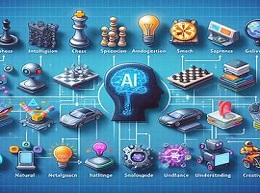Tips for Building Scalable and Robust Machine Learning Pipelines

Machine Learning (ML) pipelines are the backbone of successful model deployment and operation. This article delves into the intricacies of constructing scalable and robust ML pipelines, offering actionable tips, real-world examples, and best practices to elevate your machine learning workflow.
1.The Crucial Role of ML Pipelines:
Embark on the journey of understanding the significance of ML pipelines in streamlining the end-to-end process of developing, deploying, and maintaining machine learning models.
2. Modularize for Flexibility: The Power of Components:
Explore the benefits of breaking down ML pipelines into modular components. Understand how this approach enhances flexibility, simplifies debugging, and facilitates collaboration among team members.
Example: Creating separate components for data preprocessing, feature engineering, model training, and evaluation.
3. Automate Repetitive Tasks: Efficiency Unleashed:
Delve into the advantages of automating repetitive tasks within ML pipelines. Discover how automation accelerates the development process, reduces human errors, and ensures consistency.
Example: Implementing automation scripts for data loading, cleaning, and feature extraction to streamline preprocessing.
4. Scalable Data Handling: Meet the Demands of Big Data:
Explore strategies for handling large-scale datasets within ML pipelines. Discuss techniques such as distributed computing and parallel processing to ensure scalability and efficient utilization of resources.
Example: Using Apache Spark for distributed data processing in ML pipelines dealing with massive datasets.
5. Version Control: Safeguarding Pipeline Consistency:
Examine the importance of version control in ML pipelines. Discuss how tracking changes in code, data, and configurations ensures reproducibility, collaboration, and the ability to roll back to previous versions.
Example: Employing Git for version control to track changes in pipeline code and configurations.
6. Monitoring and Logging: Keeping an Eye on Performance:
Delve into the significance of monitoring and logging in ML pipelines. Understand how real-time monitoring and comprehensive logging contribute to identifying issues, optimizing performance, and ensuring robustness.
Example: Implementing logging statements and integrating monitoring tools to track model performance over time.
7. Error Handling and Exception Management: Fortifying Reliability:
Explore strategies for effective error handling and exception management in ML pipelines. Discuss how robust error handling ensures pipelines gracefully handle unexpected situations, minimizing disruptions.
Example: Incorporating try-except blocks and custom error messages to handle unexpected issues during data processing.
8. Optimizing Model Deployment: From Pipeline to Production:
Discuss best practices for transitioning ML models from development pipelines to production environments. Explore containerization, continuous integration/continuous deployment (CI/CD), and strategies for seamless model deployment.
Example: Using Docker containers and CI/CD pipelines to automate the deployment of ML models.
9. Documentation: A Blueprint for Reproducibility:
Highlight the importance of comprehensive documentation in ML pipelines. Discuss how well-documented pipelines enhance reproducibility, facilitate collaboration, and serve as a valuable resource for future reference.
Example: Creating detailed documentation outlining pipeline components, configurations, and dependencies.
Building scalable and robust ML pipelines is an art that requires a combination of best practices, automation, and a keen understanding of the intricacies involved. By implementing the tips and examples provided, practitioners can optimize their machine learning workflows and navigate the complexities of model development with confidence.
Master the art of building scalable and robust ML pipelines. Dive into tips, real-world examples, and best practices for optimizing your machine learning workflow.














